Securing Your Web Applications: Best Practices and Tools
In today's interconnected world, web applications are the backbone of businesses across various industries. However, the increasing prevalence of cyber threats highlights the importance of securing web applications to protect sensitive data and ensure the trust of users. In this blog, we will explore the best practices and tools for securing your web applications, empowering your business development process and safeguarding your digital assets.
![[object Object]](https://clipl-web1.sgp1.cdn.digitaloceanspaces.com/images/clu85mmil005b4irz5d6g2485.png)
Implement Secure Authentication and Authorization: Authentication and authorization are fundamental to web application security. Follow these best practices.
- Strong Password Policies: Enforce password complexity rules and encourage users to choose unique, strong passwords.
- Multi-Factor Authentication (MFA): Implement MFA to add an extra layer of security by requiring users to provide additional verification factors.
- Role-Based Access Control (RBAC): Implement RBAC to ensure users have appropriate access rights based on their roles and responsibilities.
![[object Object]](https://clipl-web1.sgp1.cdn.digitaloceanspaces.com/images/clu85bf9k004n4irzce91hblw.png)
Input Validation and Data Sanitization: Unvalidated or improperly sanitized user input can lead to security vulnerabilities. Apply the following practices.
- Input Validation: Validate and sanitize all user input to prevent common attacks like SQL injection, cross-site scripting (XSS), and command injection.
- Parameterized Queries: Use parameterized queries or prepared statements to protect against SQL injection attacks.
- Output Encoding: Encode output to prevent XSS attacks by ensuring that user-generated content is displayed as plain text and not executed as code.
![[object Object]](https://clipl-web1.sgp1.cdn.digitaloceanspaces.com/images/clu85gka7004r4irzd91c371v.png)
Secure Communication with HTTPS: Secure communication between clients and servers is crucial to protect data in transit. Implement HTTPS (HTTP Secure) by obtaining an SSL/TLS certificate. HTTPS ensures encryption and integrity of data exchanged between users and your web application, preventing eavesdropping and data tampering.
Regular Software Updates and Patch Management: Stay vigilant and promptly apply security patches and updates for all software components used in your web application, including the web server, database, framework, and third-party libraries. Regular updates help address known vulnerabilities and protect against emerging threats.
- Secure Session Management: Ensure secure session management to prevent session hijacking and session fixation attacks.
- Use Secure Cookies: Set the "secure" flag on cookies to ensure they are only transmitted over HTTPS connections.
- Implement Session Expiration: Set session expiration timeouts to invalidate sessions after a certain period of inactivity.
- Session ID Generation: Use a strong session ID generation algorithm and avoid exposing session IDs in URLs.
![[object Object]](https://clipl-web1.sgp1.cdn.digitaloceanspaces.com/images/clu85kk5m00514irz4ogv78rk.png)
Implement Role-Based Authorization: Granular authorization ensures that users have access only to the resources they require. Implement role-based authorization to restrict access to sensitive data and functionality based on user roles.
Security Testing and Code Review: Regularly conduct security testing and code reviews to identify and address vulnerabilities in your web application's codebase. Utilize tools like static analysis tools, vulnerability scanners, and penetration testing to identify security weaknesses and prioritize remediation efforts.
Web Application Firewalls (WAF): Implement a Web Application Firewall (WAF) as an additional layer of defense. A WAF can detect and block common web application attacks, including SQL injection, XSS, and cross-site request forgery (CSRF), helping protect your application from known attack vectors.
Security Information and Event Management (SIEM): Implement a Security Information and Event Management (SIEM) system to monitor and analyze security events in real-time. SIEM solutions provide centralized log management, threat detection, and incident response capabilities, enabling proactive security monitoring and incident management.
Employee Awareness and Training: Invest in employee awareness and training programs to educate your team about web application security best practices. Train them to identify potential security risks, follow secure coding practices, and report any suspicious activities or vulnerabilities promptly.
Securing your web applications is paramount to protect sensitive data, maintain customer trust, and ensure the smooth functioning of your business. By implementing best practices such as secure authentication, input validation, HTTPS, regular updates, and conducting security testing, you can significantly reduce the risk of security breaches. Furthermore, utilizing tools like WAF, SIEM, and providing employee awareness and training reinforces your web application security posture. Stay vigilant, adapt to evolving threats, and make web application security an integral part of your business development process.
























